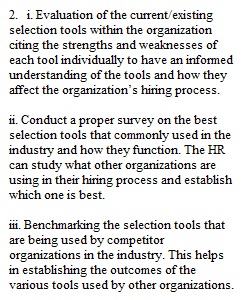


Q The Four-Fifths Rule The four-fifths rule is a way of measuring adverse impact in selection processes of organizations. It works like this: assume your organization requires a cognitive test for employment. You set a test score of 70 as the required pass rate for the candidate to be considered for an interview. Based on our numbers, if 50 percent of men passed this test with a score of 70, then four-fifths or 40 percent of women should also be able to pass the test. You might calculate it like this: Gender Total Scoring 70 or Above Total Taking the Test Percent Male 52 62 83.8 or 84 percent passed Female 36 58 62.07 or 62 percent If you divide the total of those who scored above 70 by the total number who took the test, it shows the percentage of 84 percent passed the test. If you divide the number of women who passed by the total number of women who took the test, you come up with 62 percent. Then divide 62 percent by 84 percent (62/84 = 73.8 percent). The resulting 74 percent means that it is below the 80 percent or the four-fifths rule, and this test could be considered to have disparate impact. This is only an indicator as to how the selection process works for the organization, and other factors, such as sample size, can impact the reliability of this test. Using the tables below, please calculate possible disparate impact and then answer the questions that follow. National Origin Passing Test Score Total Number Taking the Test Percent Caucasians 56 89 Minority groups 48 62 Age Passing Test Score Total Number Taking the Test Percent People under 40 28 52 People over 40 23 61 Gender Passing Test Score Total Number Taking the Test Percent Male 71 82 Female 64 85 1. Please calculate the above numbers using the four-fifths rule. Based on your calculation: 1. Which group or groups might be affected negatively by this test? 2. What would be your considerations before changing any selection tools based on this data? 3. How might you change your selection process to ensure disparate impact isn’t occurring at your organization? The Author discusses the case for Chapter 5: http://app.wistia.com/embed/medias/1ff0e24171
View Related Questions